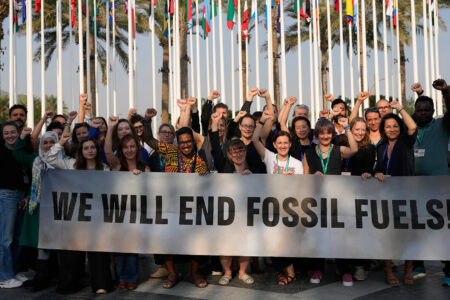
The forthcoming Clean Fuel Standard (CFS) is the single largest piece of the mitigation effort being undertaken to achieve Canada’s climate target under the Paris Agreement. Remarkably, the federal government expects the policy will reduce carbon pollution by 30 megatonnes annually by 2030. That’s equivalent to the emissions in 2015 of Manitoba and Newfoundland and Labrador, combined.
For those who want to see Canada pursue all available avenues for low-carbon innovation — not to mention to see it finally meet its international climate commitments — the design of the CFS really matters. In a long-anticipated framework document, released on December 13, Environment and Climate Change Canada outlined some of the department’s regulatory design decisions for the CFS. In part the product of a preliminary round of consultations held over the course of 2017, the CFS framework was a key deliverable on the federal government’s projected timeline for delivering and implementing this highly important climate policy.
So how will the CFS work, and what design decisions have been made so far?
Cleaning up our act, earning credit
The CFS is an example of what is called elsewhere a low-carbon fuel standard (LCFS). By measuring the life-cycle or “well-to-wheel” greenhouse gas (GHG) emissions associated with each regulated fuel (through production, processing, distribution and use) and then requiring producers and distributors to gradually reduce the carbon intensity of the fuels they supply — say, by 10 percent over 10 years — an LCFS ensures a certain level of climate-warming pollution is avoided. In the Canadian case, the CFS will cover fuels consumed by the transportation sector and those used in the building and industrial sectors. Canada will be the first jurisdiction in the world to adopt an LCFS covering these three sectors.
Crucially, the CFS will be technology-neutral, so it will allow companies to comply with its GHG performance standards in ways that are best suited to the regulated parties. Options include innovating to achieve energy intensity improvements, upgrading facilities to reduce a fuel’s total carbon footprint, blending renewable content into higher-carbon fuels and switching from fossil fuels to electricity or hydrogen.
Beyond these actions, companies can also choose to purchase compliance credits from other firms. Tradable credits will come from fuel suppliers that exceed the standard for a given fuel in a given year. As we learned in the framework document, they’ll also come from other companies such as electric vehicle manufacturers and providers of vehicle-charging infrastructure that voluntarily opt in to the credit market because they’ll be able to generate credits for deploying alternative energy sources and technologies that displace fossil fuel consumption.
What the new framework clears up
While the shape of the system has been coming into focus throughout the past year of consultations, the CFS framework document provides further clarity about how the federal government views various important design issues.
The document confirms the planned scope of the regulation (the fuels to which it applies), the regulated parties (fuel producers, importers and, in some cases, distributors), the approach to carbon intensity measurements (life-cycle analysis of each liquid, gaseous and solid fuel subtype), timing and compliance pathways.
Here are three things that stand out about how the government says it’s going to proceed with the development of the Clean Fuel Standard.
- Sustainability and land-use change on the sidelines
It is unfortunate that the government won’t be considering environmental effects beyond direct greenhouse gas emissions in the first iteration of the CFS. This is concerning and unacceptable: indirect land-use change, a measurement of the systemic response of the agricultural sector to repurposing land or crops for biofuel production that is essential to understanding the net climate effects of biofuel production, should also be considered. While there are particular challenges to the inclusion of indirect land-use change — for example, the variety of methodological choices and the absence of reliable data — other jurisdictions, including California and the European Union, have already acknowledged that not including it essentially assigns a value of zero to this undeniably important factor in the biofuels emissions profile.
According to the government, a future policy review will explore “whether consideration should be given to other sustainability issues.” Certainly, the CFS should not indefinitely disregard the wider sustainability implications of biofuels.
While Environment Canada does promise to examine the possibility of including indirect land-use change in the CFS at a later date, this uncertainty risks getting the policy off on the wrong foot. It’s essential that the government do the necessary legwork to ensure this climate-change-fighting policy spurs new, innovative and climate-friendly fuel production.
- Redundant fuels regulations to be phased out
An important question policy-makers must wrestle with is the extent to which a given policy proposal will interact with programs and rules already in place. For example, Canada already has federal Renewable Fuels Regulations, which are volumetric blending mandates requiring a certain percentage of renewable content in the petroleum fuels supplied by producers and importers. The existing mandate for gasoline is set at 5 percent; for diesel and heating distillate oil, the mandate is set at 2 percent.
The CFS framework indicates that the government will maintain these requirements in the short term, but that the new GHG-intensity-based Clean Fuel Standard will eventually replace them. This aligns with what the Pembina Institute recommended in its consultation submission last spring.
While the precise timeline has yet to be determined, the government has indicated that the phase-out will coincide with the first policy review of the CFS, before 2030 but after the regulations enter into force. It makes sense to phase down older policy approaches that fail to promote the development of second-generation (i.e., lower-carbon, noncrop) biofuels, like cellulosic ethanol or renewable diesel.
- The importance of timelines
Draft regulations for the CFS and the government’s preliminary cost-benefit analysis are due this year, with the final regulatory text expected midway through the following year. In the interim, Environment Canada will convene two stakeholder groups to receive further input and guide the development of the draft text. There has not yet been any word on when the regulations will actually enter into force — although we have learned that the requirements will be triggered at the same time for all fuel streams.
Staying on track to 2030 is key
The year 2018 is an important one for the Pan-Canadian Framework on Clean Growth and Climate Change, and as I and my colleagues noted elsewhere, a sustained focus on its implementation will be required. While the signs are promising, each year will count as we draw nearer to 2030.
Industry, government and other stakeholders need lead time to adjust to the new regulatory environment, but the longer this lead time lasts, the more stringent the Clean Fuel Standard will have to be. So a quick pace is necessary to ensure we achieve our clean growth objectives on schedule — and to sustain the possibility that, with this marquee climate policy (as with others), Canada might raise its ambition in advance of meeting its current international pledge.
Photo: Shutterstock, by Andrea Danti
Do you have something to say about the article you just read? Be part of the Policy Options discussion, and send in your own submission. Here is a link on how to do it. | Souhaitez-vous réagir à cet article ? Joignez-vous aux débats d’Options politiques et soumettez-nous votre texte en suivant ces directives.








